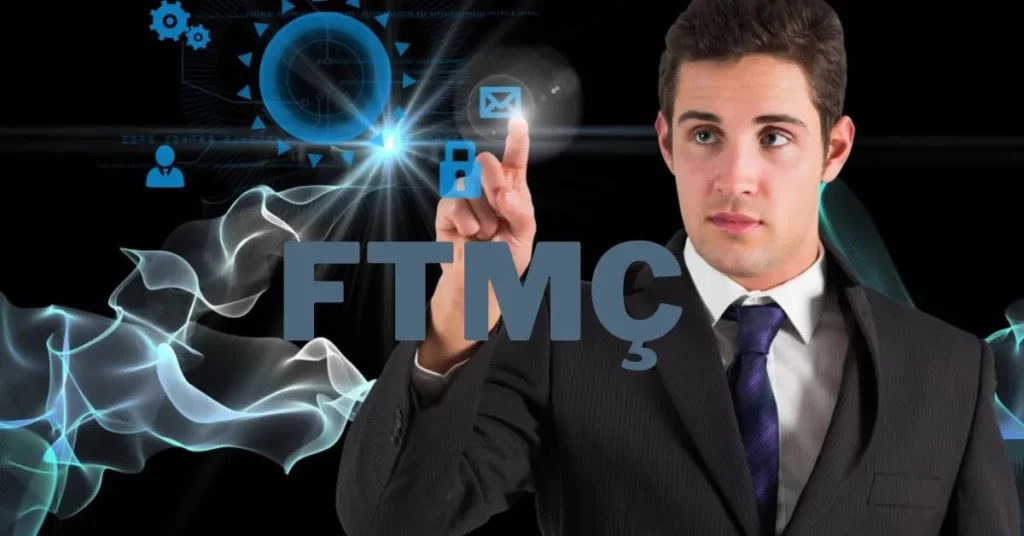Unlike traditional gender labels, FTMÇ embraces the fluidity and complexity of gender, acknowledging that one’s assigned sex at birth does not dictate one’s true identity.
FTMÇ, an acronym for Female-to-Male with a creative twist, represents a groundbreaking approach to transgender identity and expression.
This article aims to delve into the multifaceted nature of FTMÇ, shedding light on its significance, complexities, and implications.
Deciphering Ftmç: An Exploration Of Acronym Origins
1. Technical And Industry Speculations:
In technical fields like engineering, finance, and medicine, FTMÇ could be speculated to represent a specialized term, certification, or tool.
Engineers might envision it as a new methodology or software, while financiers could perceive it as a financial strategy or market evaluation framework. In medicine, it might denote a novel treatment or surgical technique aimed at improving patient care.
2. Linguistic And Regional Perspectives:

Across different languages and regions, FTMÇ may take on unique meanings or cultural significance. Linguists and anthropologists might uncover linguistic peculiarities or regional dialects that shed light on its interpretation.
It could also represent a regional authority or organization, reflecting governance structures or influential bodies in specific locales.
3. Creative Interpretations Beyond Traditional Acronyms:
Beyond its literal interpretation, FTMÇ might inspire creative interpretations and alternative meanings. Artists and storytellers could envision it as a symbol or motif in their work, representing identity, transformation, or empowerment themes.
This creative exploration opens the door to various imaginative possibilities beyond traditional acronym conventions.
What Are The Deeper Meanings And Symbolism Beyond The Given Acronym?
1. Cultural Significance And Historical Context:
Delving into the cultural and historical context surrounding FTMÇ, we uncover its more profound significance and symbolism.
Historical archives and cultural artefacts may reveal traces of its origins or usage, providing insights into its evolution. Understanding its cultural resonance can illuminate broader identity, inclusion, and societal change themes.
2. Artistic And Aesthetic Explorations:
Artists and aesthetes may find inspiration in FTMÇ’s enigmatic nature, exploring its visual and conceptual possibilities.
Through visual art, literature, or performance, they can innovatively interpret its symbolism and meaning, offering fresh perspectives on identity, gender, and self-expression.
Read: Our Tyrant Became Young Spoiler – Exploring!
3. Personal Stories And Interpretations:
At the heart of FTMÇ are the personal stories and interpretations of individuals who resonate with its message.
We learn how FTMÇ has impacted lives and shaped personal narratives through interviews, anecdotes, and reflections.
These stories offer a glimpse into the diverse experiences and perspectives contributing to the rich tapestry of FTMÇ’s meaning and significance.
Tracing The Evolution Of Transgender Identity
Throughout history, transgender individuals have navigated societal norms and expectations, challenging rigid gender binaries and advocating for the recognition of diverse gender identities.
From ancient civilizations to modern societies, transgender people have existed across cultures, contributing to the rich tapestry of human experience.
By tracing the evolution of transgender identity, we can appreciate the resilience and courage of individuals who have paved the way for greater acceptance and understanding.
The Emergence Of Ftmç: A Symbol Of Empowerment

FTMÇ represents a significant milestone in the journey towards transgender empowerment and self-expression.
As a term that transcends traditional gender labels, FTMÇ empowers individuals assigned to females at birth to embrace their authentic selves and navigate their gender journey on their terms.
It symbolizes the fluidity and complexity of gender identity, celebrating diversity within the transgender community while challenging societal norms and stereotypes
.
How Ftmç Works: Key Principles And Processes
1. Recognizing Gender Spectrum And Autonomy
FTMÇ operates on recognizing the gender spectrum and respecting individual autonomy in defining one’s gender identity.
It acknowledges that gender is not binary but exists on a continuum, allowing individuals to explore and express their gender in authentic ways.
By affirming personal autonomy, FTMÇ empowers individuals to navigate their gender journey based on their needs, preferences, and experiences.
2. Exploring Hormone Therapy And Surgical Interventions
FTMÇ involves various processes, including hormone therapy and surgical interventions, to align an individual’s physical appearance with their gender identity.
Hormone therapy, often involving testosterone, can induce secondary male characteristics such as facial hair growth and voice deepening. Surgical interventions, such as chest masculinization or genital reconstruction surgery, may be pursued further to align an individual’s body with their gender identity.
These interventions are chosen based on individual preferences and goals, highlighting the importance of personalized care in the FTMÇ journey.
Benefits And Challenges Of Ftmç:
1. Benefits Of Ftmç
- Facilitates genuine expression of gender identity beyond conventional labels.
- Encourages individuals to embrace their true selves authentically.
- Helps reduce feelings of gender dysphoria by aligning physical appearance with inner identity.
- Enhances overall well-being and mental health by promoting self-acceptance and fulfillment.
2. Challenges Of Ftmç
- Involves physical demands such as hormone therapy and surgical procedures.
- Potential side effects include mood swings, bodily changes, and surgical risks.
- Faces social stigma and discrimination due to misunderstanding and prejudice.
- Discrimination may occur in personal relationships, workplaces, and societal interactions.
Read: Mycherrycreek Login: Enhanced Your Banking Experience!
Overcoming Misconceptions And Advocating For Ftmç
- Combatting the notion that FTMÇ identity is a phase or attention-seeking behavior.
- Educating society about the diverse range of gender identities, including FTMÇ, to foster empathy and acceptance.
- Engaging in activism to promote legal protections and rights for transgender individuals.
- Working towards creating inclusive spaces in education, healthcare, workplaces, and other societal institutions.
- Ensuring individuals have autonomy over their transition journey through informed consent processes.
- Respecting the privacy and confidentiality of FTMÇ individuals’ personal information in healthcare and other settings.
- Advocating for policies and practices that promote inclusivity and equal rights for all gender identities.
- Supporting initiatives that foster understanding and acceptance of FTMÇ individuals within society.
Future Developments And Innovations In Ftmç: Towards A More Inclusive Society

1. Increasing Availability Of Support Networks And Resources
One promising trend in the future of FTMÇ is the increasing availability of support networks and resources specifically tailored to meet the needs of transgender individuals.
Online communities and support groups provide platforms for sharing experiences, offering advice, and fostering connections among those navigating their gender journey.
These virtual spaces offer invaluable emotional support and camaraderie, allowing individuals to feel less isolated and more empowered in their identity exploration
2. Fostering Awareness And Understanding In Society
As awareness and understanding of transgender identities continue to grow, efforts to foster inclusivity and acceptance within society are becoming increasingly important.
Education and awareness initiatives play a crucial role in challenging stereotypes and promoting empathy towards transgender individuals, including those who identify as FTMÇ.
Resources And Tools For Learning About Ftmç: Empowering Education And Exploration
1. Online Forums, Support Groups, And Social Media Platforms
- Online forums and support groups provide a safe space for individuals to connect, ask questions, and seek advice.
- Social media platforms host dedicated groups and pages where individuals can find community and support.
- These digital spaces offer valuable resources for accessing peer support, finding healthcare providers, and staying informed on transgender rights.
2. Websites, Blogs, And Literature Dedicated To Ftmç Education
- Various websites and blogs offer comprehensive guides on transitioning, legal rights, and mental health support.
- Literature focusing on FTMÇ provides in-depth analyses and personal narratives, contributing to a deeper understanding of transgender identity.
- These resources cater to individuals at different stages of their journey, offering practical advice and personal insights.
Frequently Asked Questions:
1. How Is Ftmç Different From Traditional Transgender Identities?
FTMÇ goes beyond traditional gender labels by acknowledging the fluidity and complexity of gender expression. It emphasizes personal autonomy in defining one’s identity and celebrates diversity within the transgender community.
2. How Can I Get Started With Ftmç?
Getting started with FTMÇ involves self-reflection, seeking support from peers and healthcare professionals, and exploring available resources. It’s essential to take things at your own pace and trust in your journey of self-discovery.
3. Is Ftmç Recognized And Supported In Society?
While progress has been made in recognizing and supporting transgender identities, there is still work to be done. Advocacy efforts are ongoing to promote inclusivity and acceptance of FTMÇ and other non-binary identities.
4. Are There Specific Healthcare Considerations For Individuals Embracing Ftmç?
Yes, individuals transitioning with FTMÇ may require specialized healthcare services such as hormone therapy and gender-affirming surgeries. It’s important to seek out knowledgeable and supportive healthcare providers.
5. How Can I Find Community And Support As Someone Exploring Ftmç?
Online forums, support groups, and LGBTQ+ organizations offer valuable community and support for individuals exploring FTMÇ. These spaces provide opportunities for connection, sharing experiences, and seeking advice.
6. What does “Ftmç” stand for?
“Ftmç” is an abbreviation commonly used in Portuguese messaging and internet slang. It stands for “Foi tão bom te ver,” which translates to “It was so good to see you” in English.
7. How is “Ftmç” used in conversations?
“Ftmç” is typically used to express happiness or pleasure upon seeing someone after a long time or experiencing a positive encounter with them. It’s often used in informal chats, text messages, or social media interactions among friends or acquaintances.
8. Is “Ftmç” used only in Portuguese-speaking communities?
Yes, “Ftmç” is primarily used in Portuguese-speaking communities, as it is an abbreviation derived from the Portuguese language. However, due to the global nature of the internet, it’s possible to encounter it in conversations between people who are familiar with Portuguese slang or expressions.
9. Are there variations or similar abbreviations to “Ftmç”?
Yes, variations of “Ftmç” may exist with slight alterations in spelling or punctuation. Additionally, similar expressions conveying the sentiment of joy or happiness upon seeing someone may exist in other languages or cultures.
10. Can “Ftmç” be used in formal communication?
No, “Ftmç” is considered informal and should be used in casual conversations among friends, family, or acquaintances. It’s not appropriate for formal or professional communication settings.
Conclusion
In this comprehensive exploration of FTMÇ, we’ve delved into its origins, principles, benefits, challenges, and impact on society. From tracing its acronymic roots to understanding its multifaceted nature, we’ve uncovered the complexities of transgender identity and expression.
FTMÇ represents more than just a label; it embodies empowerment, self-discovery, and authenticity for individuals navigating their gender journey. By recognizing the gender spectrum and promoting individual autonomy, FTMÇ offers a supportive framework for transitioning and self-expression.
Read:
